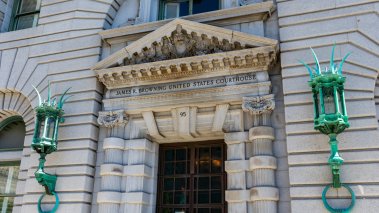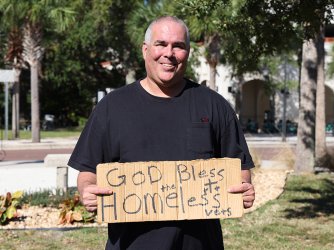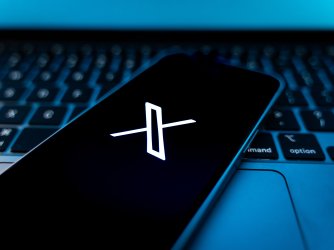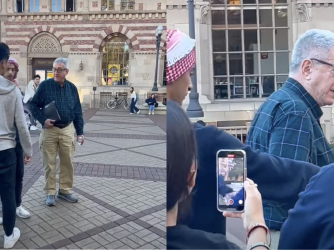Table of Contents
FIRE reminds Ninth Circuit that teachers have free speech rights, too

Michael Vi / Shutterstock.com
Entrance to the James R. Browning U.S. Court of Appeals Building in San Francisco, California, which houses the U.S. Court of Appeals for the Ninth Circuit.
Few people have a better grasp of the problems facing our public schools today than those who work there. So it makes sense that, as government employees, our nation’s teachers and administrators generally have the First Amendment right to speak on issues of school policy in their personal time.
But in Oregon, a school district fired an assistant principal and a teacher for doing just that. Worse, a district court said that doing so didn’t violate the First Amendment — and that, even if the firing were unconstitutional, the school officials were entitled to qualified immunity.
As FIRE explains in its amicus curiae — “friend of the court” — brief filed with the U.S. Court of Appeals for the Ninth Circuit in support of the fired employees, that result gets the First Amendment and qualified immunity backward.
Disagreements in Oregon lead to a lawsuit
Plaintiffs Rachel Sager (formerly Rachel Damiano) and Katie Medart worked at schools in Grants Pass School District 7 in Oregon. After disagreeing with the district’s policies on gender identity, they independently decided to publish their own model gender identity policy and publicized it with a video called “I Resolve.” Almost immediately, other staff members discovered the materials and complained, and the two were placed on administrative leave while the school district investigated. A few months later, the school district fired them.
Damiano and Medart sued, alleging they were fired for their First Amendment-protected speech. The district court ruled against them and granted summary judgment for the school district, ending the case.
The school must prove that the employees’ speech caused classroom disruption — but not just any disruption will suffice.
Citing the 1968 landmark U.S. Supreme Court case Pickering v. Board of Education, the district court ruled that the school’s interest in “protecting the safety and wellbeing of its students” outweighed Damiano and Medart’s First Amendment right to comment on matters of public concern, like school policies. The court further held that, even if the school’s interest in safety did not outweigh the plaintiffs’ First Amendment rights, the school district could not be found liable for damages because it was reasonable for it to think firing the plaintiffs for their speech is legal, so the district was protected by qualified immunity.
As FIRE explained to the Ninth Circuit, both of those holdings are wrong.
Pickering protects teacher speech so long as it does not disrupt the classroom
The district court fundamentally misunderstands Pickering. That case is meant to protect teacher speech in most circumstances, not make it a fireable offense.
In Pickering, a case with incredibly similar facts, a teacher was fired for publishing a letter critical of how the school chose to allocate funds. The Supreme Court ruled for the teacher under the First Amendment, holding that “a teacher’s exercise of his right to speak on issues of public importance may not furnish the basis of his dismissal from public employment.”
The Court noted that when the state is an employer, it does have an interest “in regulating the speech of its employees that differ significantly from those it possesses in connection with regulation of the speech of the citizenry in general.” So courts must “balance” the employee’s interest in commenting upon matters of public concern with the state’s interest “in promoting the efficiency of the public services it performs through its employees.” This has since become known as “Pickering balancing.”
Under Pickering, the Ninth Circuit has established a very high bar for K-12 employees to be fired for their speech. The school must prove that the employees’ speech caused classroom disruption — but not just any disruption will suffice. As FIRE’s brief explains:
The disruption must be of the classroom, not the teacher’s lounge or the local community; the complaints must come from students and parents, not teachers and outside community members; and the disruption must be caused by the speaking employees themselves, not outraged community members who cause a ruckus.
In this case, the parties hotly disputed all of the relevant facts. Both the plaintiffs and the school district agreed that complaints were filed, but they disagreed over whether those complaints were from students, staff, community members, or all three. They disagreed over how many complaints were filed — whether a flood or just a handful. And they disagreed over whether any classroom disruption was caused by the plaintiffs themselves or by others reacting to the plaintiffs’ controversial speech.
Those disagreements on key issues mean that the district court should not have granted summary judgment to the school and instead should have let the case go to a jury trial. When the facts are unclear, it is up to a jury, not a judge, to decide which side is telling the truth.
Qualified immunity does not protect school officials who decide, after lengthy deliberation, to violate the First Amendment
The Oregon district court was also wrong in ruling that the school district officials were protected by qualified immunity. FIRE’s brief reiterates the same argument FIRE has made elsewhere: Qualified immunity makes no sense when existing law provides government officials fair warning that what they did was unlawful. And here, the school district had that fair warning in spades.
Qualified immunity is a judicial doctrine that routinely denies citizens a remedy for constitutional violations. Courts cite qualified immunity to shield government officials from lawsuits seeking damages — money — because those officials violated citizens’ constitutional rights. But as the Supreme Court held in Harlow v. Fitzgerald, qualified immunity does not protect officials who violate “clearly established statutory constitutional rights of which a reasonable person would have known.”
Qualified immunity should not be “one size fits all.” Rather, when school officials have plenty of time to consider the First Amendment issues at stake and choose to violate the First Amendment anyway, they should be liable for the damages their constitutional violations cause.
The Supreme Court clarified what “clearly established” means in a later case called Hope v. Pelzer. Per Hope, “clearly established” does not require precedent with exactly matching facts, so long as the law gave “fair warning” to an official that their conduct was unlawful. Here, the Ninth Circuit already held almost two decades ago that schools cannot punish teachers for their school-related political advocacy, so the school district definitely had “fair warning” that its punishment of the teacher and assistant principal was unlawful.

Supreme Court denies cert in Hoggard v. Rhodes, but Justice Thomas warns qualified immunity is on ‘shaky ground’
News
Justice Thomas’ commentary may provide a blueprint for addressing qualified immunity and the First Amendment on campus going forward.
But even if there was no “clearly established” case law, a growing chorus of justices, judges, and academics have argued that qualified immunity should never apply to First Amendment violations by school officials, particularly when they had plenty of time to decide whether to violate a citizen’s rights. Justice Clarence Thomas put this best a couple of years ago in a statement regarding the Supreme Court’s decision to not hear an appeal of Hoggard v. Rhodes in 2021:
But why should university officers, who have time to make calculated choices about enacting or enforcing unconstitutional policies, receive the same protection as a police officer who makes a split-second decision to use force in a dangerous setting?
[ . . . ]
This approach is even more concerning because “our analysis is [not] grounded in the common-law backdrop against which Congress enacted [§ 1983].” It may be that the police officer would receive more protection than a university official at common law.
FIRE agrees. Qualified immunity should not be “one size fits all.” Rather, when school officials have plenty of time to consider the First Amendment issues at stake and choose to violate the First Amendment anyway, they should be liable for the damages their constitutional violations cause. That is why FIRE is asking the Ninth Circuit to reverse the decision of the district court and let this case go to a jury trial.
You can read more about this case, including FIRE’s brief, here.
Recent Articles
FIRE’s award-winning Newsdesk covers the free speech news you need to stay informed.


FIRE Statement: X Corp's lawsuit and Texas's investigation into Media Matters for America are deeply misguided

Anonymous speech is as American as apple pie


